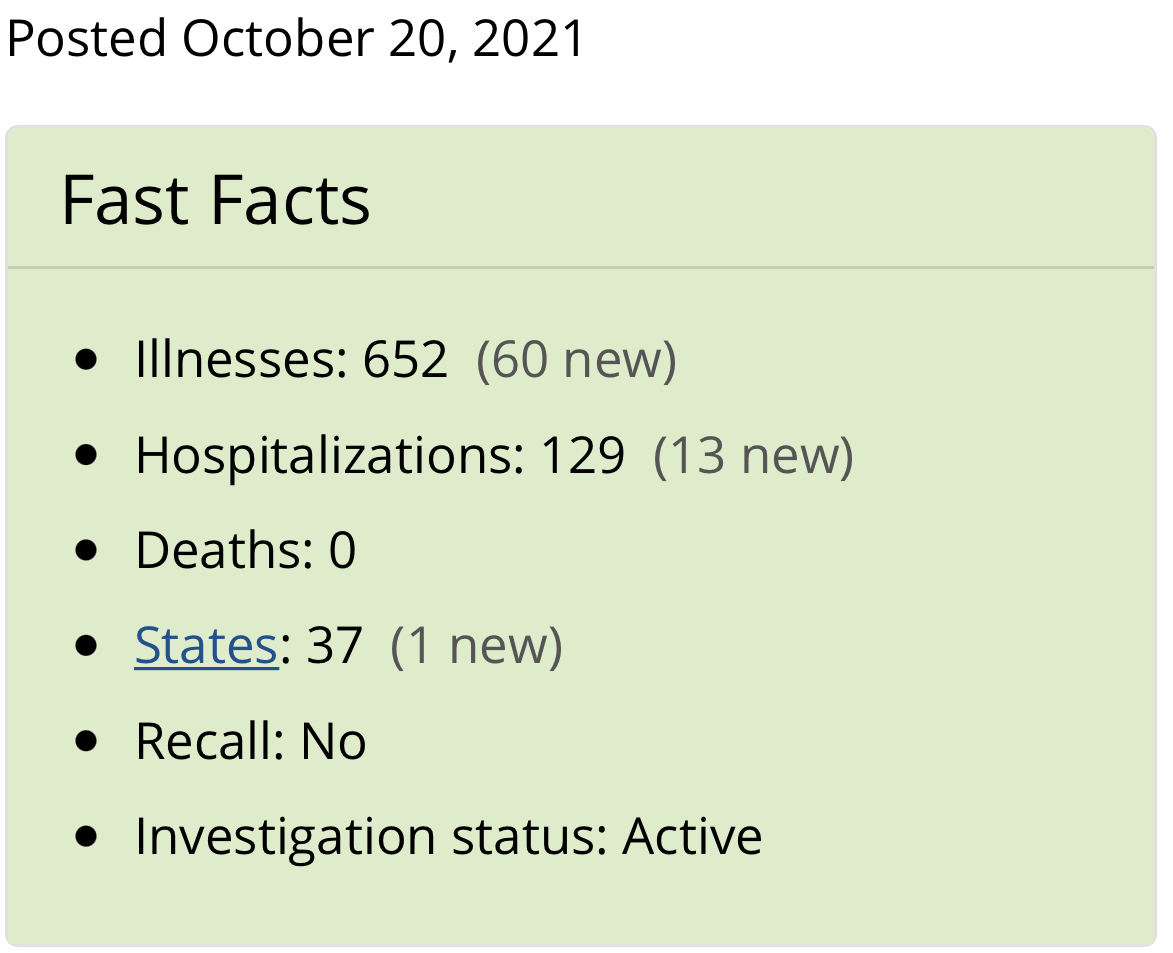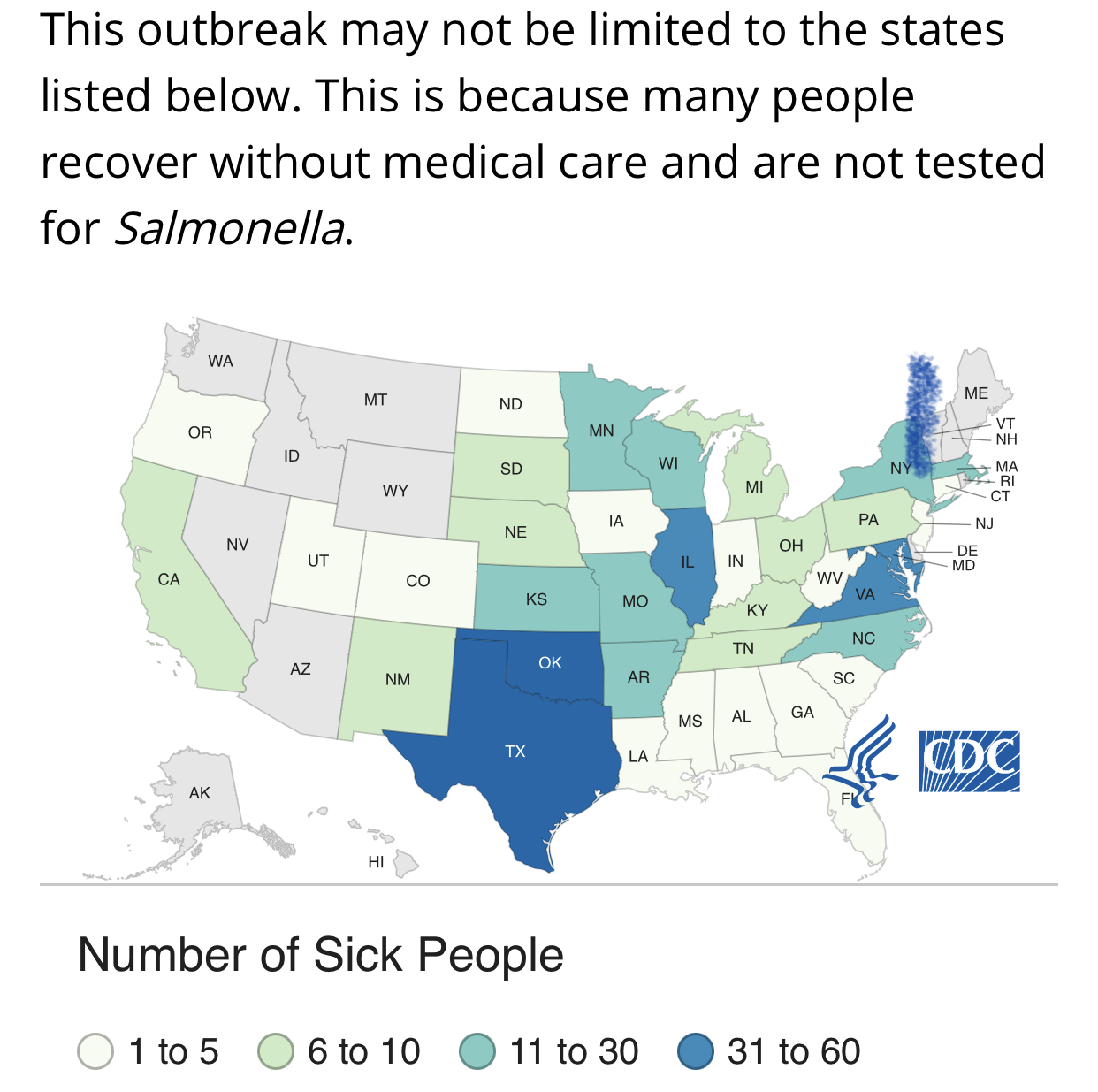CDC, FDA, and public health and regulatory officials in several states are collecting different types of data to investigate a multistate outbreak of Salmonella Oranienburg infections linked to onions.
Epidemiologic and traceback data show that illnesses in this outbreak are linked to whole red, white, and yellow onions distributed by ProSource Inc. imported from Chihuahua, Mexico.

Officials said investigators are working to determine if other onions or suppliers are linked to this outbreak.
According to CDC officials, as of October 18, 2021, 652 people infected with the outbreak strain of Salmonella Oranienburg have been reported from 37 states (see map).
Illnesses started on dates ranging from May 31, 2021, to September 30, 2021 (see timeline).
Sick people range in age from less than one year to 97 years, with a median age of 37, and 57% are female.

Officials said of 417 people with information available, 129 (31%) have been hospitalized. No deaths have been reported.
The actual number of sick people in an outbreak is likely much higher than the number reported, and the outbreak may not be limited to the states with known illnesses.
This is because many people recover without medical care and are not tested for Salmonella.
In addition, recent illnesses may not yet be reported as it usually takes 3 to 4 weeks to determine if a sick person is part of an outbreak.
In interviews, ill people answered questions about the foods they ate and other exposures in the week before they became ill. Of 193 people with information, 145 (75%) reported eating or maybe eating raw onions or dishes likely containing raw onion before they became sick.
Several ill people reported eating at the same restaurants, indicating they may be part of illness clusters. These clusters can provide clues about what food item may be making people sick.

If several unrelated ill people ate or shopped at the same location of a restaurant or store within several days of each other, it suggests that the contaminated food item was served or sold there.
States identified 20 illness clusters at restaurants where onions were served. Information from these clusters shows that many ill people ate raw onions.
Officials say the FDA conducted a traceback investigation and identified ProSource Inc. as a common supplier of imported onions to many restaurants where sick people ate.
One of these clusters occurred in a restaurant where investigators identified the outbreak strain of Salmonella Oranienburg in a condiment container with leftover lime and cilantro.
The sick person reported that the condiment cup had also contained onions, although none were left when the condiment was tested.
FDA is working to determine if other suppliers of onions may be linked to this outbreak or if there is a common supplier of onions in Chihuahua, Mexico.
Whole-genome sequencing of bacteria in samples from 609 people did not predict any antibiotic resistance.
Samples from three people were predicted to be resistant to one or more of the following antibiotics: amoxicillin-clavulanic acid, ampicillin, cefoxitin, and ceftriaxone, gentamicin, streptomycin, sulfamethoxazole, and tetracycline.
Standard antibiotic susceptibility testing by CDC’s National Antimicrobial Resistance Monitoring System (NARMS) laboratory is currently underway.
Most people with Salmonella illness recover without antibiotics. However, if antibiotics are needed, this resistance is unlikely to affect the choice of antibiotic used to treat most people because it is rare.
